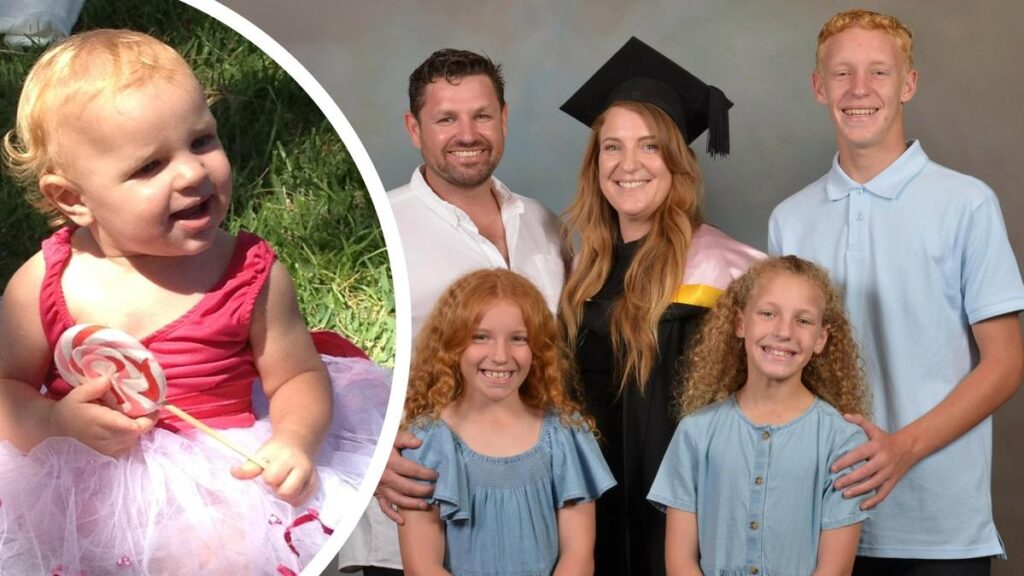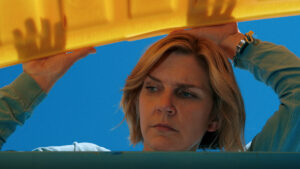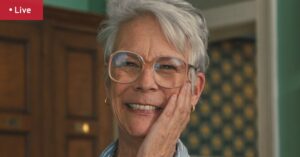
Melanie Andrews with her husband and thee children Chase Paisley and Eden. Her daughter Mylee, right, suddenly dies in her sleep.
When Melanie Andrews kissed her 15-month-old daughter, Mylee, goodnight, she never imagined it would be for the last time. The Perth mother found Mylee lifeless in her crib the next morning, a victim of Sudden Infant Death Syndrome (SIDS), a tragedy that would forever change her life.
“We put her to bed a happy, healthy little girl, and when I went to get her in the morning, she had died sometime during the night without sound or warning,” Andrews recounted. Mylee, with her strawberry blonde hair and big blue eyes, had passed away suddenly, leaving her family in shock and grief.
As Red Nose Day approaches, an event dedicated to raising funds and awareness for SIDS research, Andrews shares her heart-wrenching story. “I just remember whispering, ‘Is this really happening?’ because it seemed so surreal. I couldn’t believe our little girl was gone,” she said.
Uncovering the Mystery Behind Mylee’s Death
For three agonizing years, Mylee’s death remained unexplained. Eventually, further testing revealed an undiagnosed immune condition exacerbated by a bacterial infection. “You live with guilt every day, wondering if you could have done anything different,” Andrews expressed. “To know that her death was preventable added another layer of complexity.”
This revelation became a turning point for Andrews, who resolved to prevent other families from experiencing similar pain. “I realized that if I wanted to see change, I had to be the change,” she explained. “I came to the University of Western Australia, studied a Bachelor of Biomedical Science, graduated with honors, and now I’m pursuing my PhD.”
A New Path in Biomedical Research
Andrews’ PhD research focuses on the potential links between certain bacteria, immune responses, and sudden unexplained deaths in childhood. This rare and devastating cause of death continues to puzzle medical experts worldwide. “It rocked our entire world. It changed who I am and what I thought of life,” she said. “With our other children, it took away the innocence that they would just grow up one day.”
Her ultimate goal is clear: “I want no family to ever feel what we did, to endure losing a child. It’s the worst possible pain you could imagine.” Andrews remembers Mylee as a “happy, cheerful, bubbly little girl,” full of mischief and life, with no indication that anything was wrong.
The Importance of Red Nose Day
Andrews emphasizes the significance of Red Nose Day, which she describes as “so important.” The event supports families who have lost children and aims to prevent future tragedies. “Getting involved and supporting Red Nose Day supports families like mine to get answers and helps other families with little ones, hopefully preventing them from dying in the future,” she said.
“Getting involved and supporting Red Nose Day really supports families like mine who have lost children to get answers and it supports other families who have little ones and hopefully we can prevent them from dying in the future.” – Melanie Andrews
As Andrews continues her research, her dedication serves as a beacon of hope for families affected by SIDS. Her journey from grief to action highlights the power of resilience and the impact one person can have in the face of unimaginable loss.





